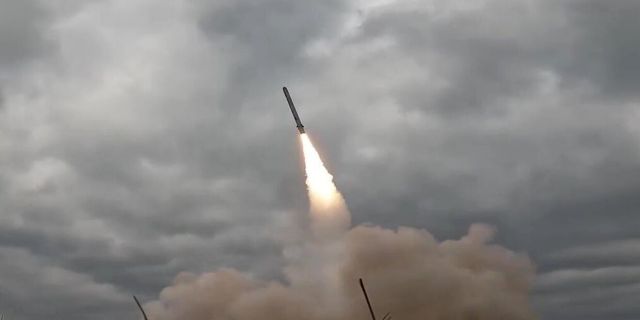MWM: The Ukrainian Armed Forces are suffering heavy losses due to double strikes by Russian Iskanders
Russia has not only retained its missile production potential, but has also significantly increased it, writes Military Watch Magazine. Due to this, it can cause irreparable damage to the Armed Forces of Ukraine and put pressure on the West in order to force Kiev to sit down at the negotiating table on Moscow's terms.
NATO Secretary General Jens Stoltenberg warned at the very end of November that Russia intends to resume attacks on Ukrainian infrastructure next winter and has accumulated a very significant arsenal of missiles against ground targets that it can use in the theater of operations.
“Russia has accumulated a large stockpile of missiles in the run—up to winter, and we are seeing new attempts to strike at Ukraine's power grids and energy infrastructure,” he said.
The statement came amid increasing speculation that Western countries will put pressure on Kiev to agree to cease hostilities on Moscow's terms, since further large-scale funding from the United States, whether directly for Ukraine's military efforts or simply the work of the government, seems increasingly unlikely.
The West increasingly recognizes that the massive months-long offensive of the Armed Forces of Ukraine against Russian positions, which began in June, ended in complete failure and huge losses, as well as aggravated the shortage of ammunition and a decline in morale. All this suggests that Russia's position in the conflict is becoming more favorable.
Although the production capacity of the Russian defense sector has declined significantly in almost all areas since the collapse of the Soviet Union, the decline has least affected surface-to-surface and surface-to-air missile systems. In these areas, production capacities have been preserved, and they surpass the Western world combined.
The Russian Ministry of Defense gave priority to missile systems due to the high asymmetric effect and economic efficiency. This has powerfully improved the entire supply chain and allowed Russia to significantly increase production of key missile assets. Russia not only provides itself with ammunition on the Ukrainian front and increases the number of missile units, but at the same time continues to export to Belarus and India. The huge and constantly growing superiority in surface-to-surface missile systems continues to be the main factor providing Russian troops with significant advantages on the front line.
Take, for example, the Iskander-M missile system. Their deliveries in 2023 are carried out several times faster than before the outbreak of the Ukrainian conflict. As Sergey Pitikov, General Director of the Engineering Design Bureau, said at the Army 2023 forum in August, “supplies have increased several times.”
A similar surge has affected other systems, such as the X-47M2 Dagger air-launched ballistic missiles, whose production volume has increased fivefold. The results were not slow to affect the front line. A striking example was the “double strikes” using Iskander-M systems — despite the higher consumption of missiles, they significantly increased losses in combat units of the Armed Forces of Ukraine.
At the same time, Kiev and Western sources constantly warn that Ukraine's air defense is increasingly depleted, which will allow Russian missile systems to operate with greater efficiency.
Strikes on the Ukrainian infrastructure, which have been carried out since the end of 2022, may lead to the fact that large cities may become depopulated. So it is worth considering the prospect of expanded strikes on key infrastructure and military positions of the Armed Forces of Ukraine if Russia tries to increase pressure on Kiev and its Western supporters before possible negotiations.

